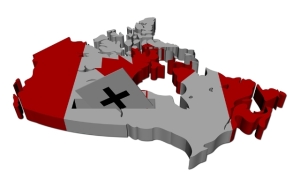The poll results today (the definitive Nanos tracking) tell us that nothing has happened in this campaign. The parties remain in the same order and with almost the same share of decided voters as they did when the campaign was launched. As much as the media hang on every movement in the polls (and hope each perceived gaffe or new announcement produces such movement), this has — and will likely continue to be — a steady as you go campaign.
The small movements in the trends for each party over time are a combination of a real stimulus response reaction to news events and the sampling error that naturally occurs. We can construct a story for each rise and fall for the parties but in retrospect, it appears so far, that there has been little enduring impact of any of the campaign on voters.
Setting aside the fact that the national numbers could be masking significant riding-level changes, what are we to make of the campaign when it appears to be so little change? Is it really true that they don’t matter? Should we expect game-changing campaign events to fundamentally alter who wins on election day?
The reality is that a lack of movement does not necessarily mean that the campaign is irrelevant — it merely suggests that voters are not getting new information on which to revise their judgement . This either reflects a lack of new information or that people are not paying attention to the new information. Both of which are likely.
Thinking back to recent campaigns a number of dramatic movements occurred but in all cases these movements reflected an increase in information about something voters were likely unsure. In this campaign, there was little opportunity for a grand revelation that would fundamentally alter the party’s fortunes and, so far, this has proven correct. While Ignatieff had the greatest potential to surprise thanks to his pre-campaign image (helped by Conservative ads), there has not been a defining moment significant enough to cut through and reach significant voters.
The fact remains that to impact voters the new information much be dramatic and widely available because we know that (a) people ignore information that they disagree with and (b) seek out information that buttresses existing views.
One could argue that the modern election campaign is actually less likely to be the place to educate voters now compared with the past. Current laws require that the minimum length of an election campaign at the federal level is 36 days and recent campaigns have generally been of this length. But 36 days is simply not enough time to tell people everything that parties and their leaders are trying to tell them.
A solution for parties is to break out of the idea that campaigning is for elections. Platforms — especially those of the opposition — need to be released months ahead of time. There is more time to talk about them, refine them, and, in a minority situation, define what it is to be that party.
Don’t be surprised if the campaign continues on its current track… new leaders, a great (or bad) new idea, or a dramatic change in turnout are what will make election campaigns more dynamic in the future.

